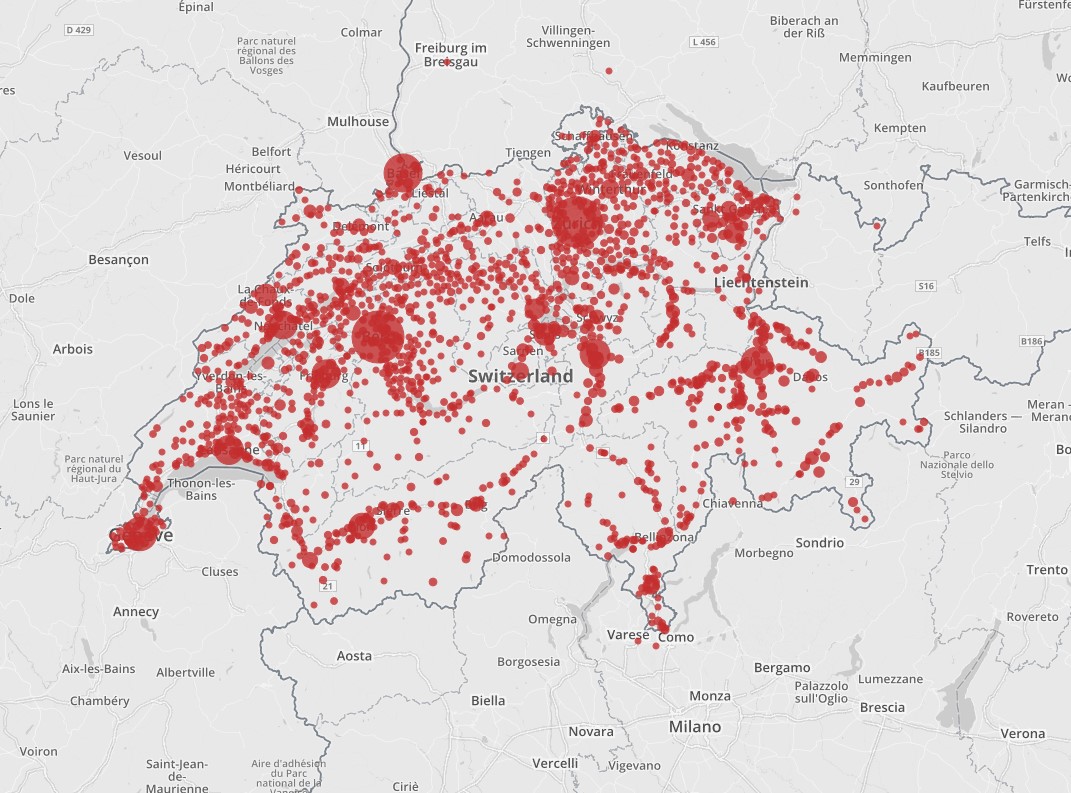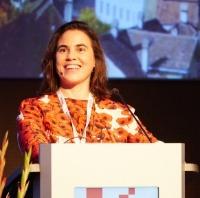Barbara Signori is Head of e-Helvetica at the Swiss National Library, Bern.
The Swiss National Library has a mandate to collect, catalogue, store and disseminate the cultural heritage created in Switzerland and abroad by and about the Swiss. This sounds like a clear enough mission, but dig deeper and this mandate raises all sorts of tough questions especially in a digital world.
First of all, what is digital cultural heritage? Obviously it goes far beyond e-books and e-journals, it includes Swiss websites, newsletters of Swiss societies, and so on. But what about all the digital data that is created by Swiss people every minutes of every day? The selfies, blogs, tweets, social media, personal digital archives. I’m sure that not everything can or should be considered cultural heritage. But who decides what is and what isn’t?
And then how do we cope with the enormous quantity of information being produced? How can we decide what to keep for future generations when we cannot even cope with the output of the current generation? Not to mention the costs. With budgets being cut all the time, what does that mean for our cultural heritage?
At Web Archive Switzerland we have been struggling with these questions for the last 14 years. So what have we learned?
The key lesson for us was to look beyond our own walls and borders. We learned to let go of the idea that we can do it alone. We learned that we could not control the world of content through clever curation. We learned how to create partnerships and strong networks of institutions. We learned how to engage new sorts of curators. We learned how to trust each other and share synergies and costs, all with the common goal of saving as much digital heritage as possible.
We learned that web archiving is a time consuming and expensive thing to do. It is imperative to have full management support before starting to build a web archive. It really is a never-ending story, a commitment to the future. It is inconceivable to close a web archive once you have started. Moreover, a collection will become useless if it does not grow and is not maintained. Web archives become interesting only over time. They become indispensable when websites disappear from the live web.
We learned not be perfectionists. Even if a snapshot is not rendered perfectly in the Wayback machine it is still worth to keep track of it. One thing is certain: that instance can never be retrieved if you delete it. It will be lost.
We learned not to try to be comprehensive – it’s simply not possible. There are still so many technical challenges to be solved in crawling and not every website can be downloaded entirely. We learned to live with the holes. Perhaps it’s easier for the Swiss, after all our Emmental cheese is full of holes and still tastes great!
We learned not to try to solve all the technical and legal problems regarding access before collecting. Our guiding principle is “What you don’t collect today will be lost tomorrow”. Therefore it’s more important to have the website in our collection and to solve technical and some legal access issues later.
Looking to the future, I think that there are many more ways to collaborate on digital preservation in the future. For instance, perhaps collections could be linked with each other to increase the scope covered. It is highly likely that there is a lot of Swiss cultural heritage hiding in other archives in other countries. Content that is not obviously Swiss at first sight or not on a .ch domain, but nevertheless relevant. And vice versa of course. We have content in Web Archive Switzerland that is relevant to other collections.

Wide distribution of collected websites across Switzerland thanks to a broad national collaboration of canton libraries, archives, universities and other institutions.
I think we would all benefit from valuable network effects if we open up our archives to each other and let users search across all of them. Each archive that joins the network would increase the value of the whole network. It is also a much smarter use of resources since it means that not every piece of data needs to be stored in multiple places.
I believe we should stay open-minded and broaden the definition of cultural heritage in traditional memory institutions. We should build networks that widen our scope be that in text, video, sound, personal data, websites, apps or any other medium.
When it comes to preserving cultural heritage, we really are better together!
This blog post is based on a paper presented at a Satellite Meeting of IFLA WLIC 2017. The full paper is available at the IFLA Library here: http://library.ifla.org/id/eprint/1801
